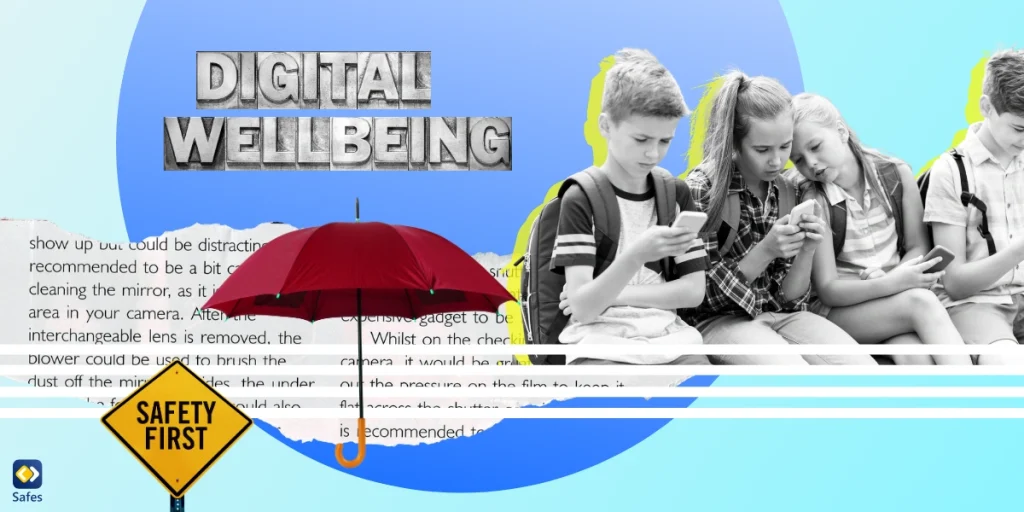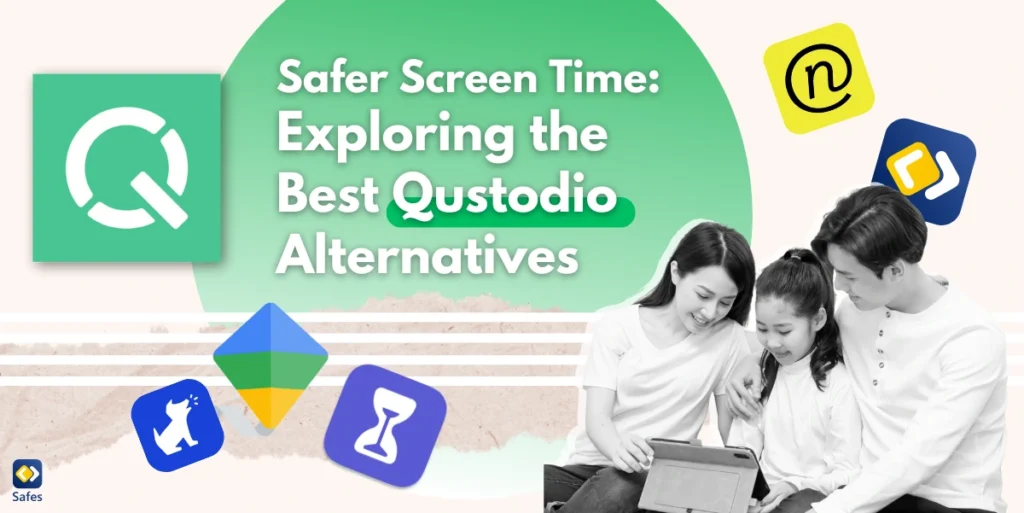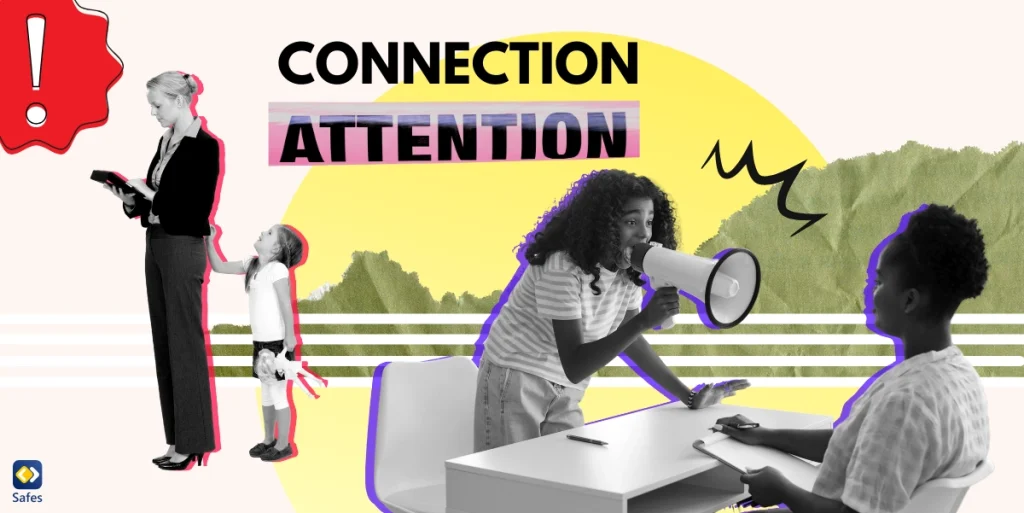In the era of ubiquitous connectivity, the digital realm has become an intrinsic part of our lives, offering unparalleled opportunities for learning, entertainment, and social interaction. However, this vast expanse of the online world harbors a multitude of perils that can jeopardize the safety and well-being of children and young adults. From the insidious spread of harmful content to the ever-present risk of predatory behavior, these internet dangers demand our utmost vigilance and proactive measures to safeguard the innocence and security of our youth.
Download and Start Your Free Trial of the Safes Parental Control App
Perilous Realms: What Are the Dangers of the Internet?
As technology continues to evolve at an unprecedented pace, so too do the dangers of Internet for youth. While the internet has undoubtedly revolutionized our lives, it is imperative that we remain vigilant and proactive in addressing the potential risks that threaten the well-being of our children and young adults.
In this comprehensive exploration, we delve into the seven most pressing internet dangers for students and children that pose a significant threat to their safety and mental health. From the insidious spread of inappropriate content to the ever-present risk of online predators, these perils demand our utmost attention and a concerted effort to mitigate their impact.
-
Cyberbullying: The Relentless Torment in the Digital Age
In the realm of online interactions, cyberbullying has emerged as a pernicious force, inflicting emotional and psychological harm on countless young individuals. This form of harassment transcends the boundaries of the physical world, allowing perpetrators to target their victims relentlessly, often under the veil of anonymity.
Cyberbullying can manifest in various forms, including the dissemination of hurtful messages, the spreading of malicious rumors, and the non-consensual sharing of private or embarrassing information. The impact of such actions can be devastating, leading to a myriad of adverse consequences, such as social isolation, anxiety, depression, and, in extreme cases, self-harm or suicidal ideation.
Alarming Internet Dangers Statistics: A Glimpse into the Pervasiveness of Cyberbullying
- A staggering 49% of teenagers have experienced some form of cyberbullying, according to a recent Pew Research study.
- Alarmingly, one in ten teenagers has received physical threats online, underscoring the severity of this issue.
- Among specific demographics, such as LGBTQ+ students, nearly half have encountered online harassment, highlighting the need for targeted interventions and support.
Combating Cyberbullying: Fostering a Culture of Empathy and Resilience
Addressing cyberbullying requires a multifaceted approach that involves educators, parents, and the broader community. By fostering open communication channels and creating safe spaces for victims to share their experiences, we can cultivate a culture of empathy and support. Additionally, implementing comprehensive digital literacy programs and promoting responsible online behavior can equip young individuals with the tools to navigate the digital landscape with confidence and resilience.
- Related Article: How to Stop Cyberbullying in Schools: A Guide for Educators
-
Inappropriate Content: Shielding Innocent Minds from Harmful Exposure
In the vast expanse of the internet, a plethora of inappropriate and potentially harmful content lurks, posing a significant threat to the well-being and development of young minds. From explicit sexual material to graphic violence and extremist ideologies, this unfiltered exposure can have profound psychological and emotional consequences, shaping attitudes and behaviors in ways that may be detrimental to their growth.
The Pervasive Reach of Inappropriate Content
- A staggering 58% of tweens and a concerning 75% of teenagers have encountered nudity or sexual content online, according to a study by Bark in 2023.
- Another report from Internet Matters reveals that a staggering 56% of children aged 11 to 16 have inadvertently stumbled upon explicit material while navigating the internet.
Safeguarding Young Minds: Implementing Robust Content Filtering and Parental Guidance
Protecting children and young adults from the perils of inappropriate content requires a multifaceted approach. Implementing robust content filtering solutions, such as parental control applications, can effectively block access to harmful material. However, these technological measures should be complemented by open dialogues and comprehensive education efforts, empowering young individuals to develop critical thinking skills and make informed decisions when navigating the digital realm.

-
Privacy Invasions: Safeguarding Personal Information in the Digital Age
In the era of ubiquitous social media and online interactions, the risk of privacy invasions has become an ever-present concern. Personal information, once shared online, can be exploited by malicious actors, leading to identity theft, cyberstalking, and targeted phishing attacks. The consequences of such breaches can be far-reaching, compromising not only the current security but also the future well-being of young individuals.
Internet Dangers Facts: The Staggering Impact of Privacy Breaches
- In 2023, a staggering 353 million individuals were affected by data breaches, highlighting the pervasiveness of this issue and the vulnerability of young internet users.
- Alarmingly, a significant portion of these breaches involved the exposure of sensitive personal information, such as names, addresses, and contact details, leaving individuals at risk of exploitation.
Fortifying Digital Defenses: Fostering Responsible Online Behavior and Implementing Robust Security Measures
Protecting personal privacy in the digital age requires a multifaceted approach that combines responsible online behavior with robust security measures. Educating young individuals about the importance of safeguarding their personal information, implementing strong password practices, and encouraging the use of privacy-enhancing tools and settings can go a long way in mitigating the risks associated with privacy invasions. Additionally, fostering a culture of vigilance and encouraging the reporting of suspicious activities can help identify and address potential threats before they escalate.
-
Online Predators: Safeguarding Innocence from Malicious Intentions
The internet, with its vast expanse and anonymity, has become a hunting ground for predators seeking to exploit and manipulate vulnerable individuals, particularly minors. These predators often employ deceptive tactics, such as grooming, to gain the trust of their targets and ultimately exploit them for sexual, emotional, or financial gain. The consequences of such encounters can be devastating, leaving lasting scars on the victims’ well-being and mental health.
The Unsettling Reality of Online Predation
- At any given time, it is estimated that a staggering 500,000 internet predators are actively pursuing children through multiple online profiles, according to alarming statistics.
- Shockingly, one in five children has been sexually solicited online, with a concerning 75% of them failing to disclose these inappropriate encounters to their parents or guardians.
Vigilance and Education: Empowering Youth to Recognize and Report Predatory Behavior
Combating the threat of online predators requires a multipronged approach that combines vigilance, education, and proactive measures. Empowering young individuals with the knowledge and tools to recognize and report predatory behavior is crucial. Additionally, fostering open communication channels and encouraging them to seek guidance from trusted adults can help mitigate the risks and ensure timely intervention. Collaboration between law enforcement agencies, educational institutions, and technology companies is essential in identifying and apprehending predators, while also implementing robust safeguards to protect vulnerable populations.
-
Gaming Addiction: Striking a Balance in the Virtual World
While online and console gaming can provide engaging entertainment and social interaction, the allure of these virtual worlds can also lead to addictive behaviors that disrupt physical health, academic performance, and overall well-being. Excessive gaming can result in sleep disturbances, social isolation, and a sedentary lifestyle, potentially exacerbating mental health issues and hindering personal growth.
The Influence of Gaming Culture
- A staggering 82% of children identify themselves as “gamers,” highlighting the widespread appeal and influence of gaming culture.
- Concerningly, one-third of teenage gamers (ages 15-17) report engaging in online interactions with individuals they initially met through gaming platforms, underscoring the potential risks associated with these virtual environments.
Fostering Moderation and Healthy Habits: Balancing Virtual and Real-World Experiences
Striking a balance between the virtual and real-world experiences is crucial in mitigating the dangers of gaming addiction. Encouraging moderation and setting reasonable time limits can help prevent excessive gaming from becoming a detriment to personal growth and well-being. Additionally, promoting alternative leisure activities and fostering face-to-face social interactions can provide a healthy counterbalance to the allure of the virtual realm. Parental involvement and open communication are key in identifying and addressing potential addictive behaviors early on, ensuring that gaming remains a positive and enriching experience.
![Teenage boy suffering from gaming addiction hooked on playing video games late at night]](https://www.safes.so/wp-content/uploads/2023/09/Gaming-Addiction_-Striking-a-Balance-in-the-Virtual-World.webp)
-
Social Media Pitfalls: Navigating the Complexities of Online Interactions
Social media platforms have revolutionized the way we communicate and connect with others, offering unprecedented opportunities for self-expression and social interaction. However, these virtual spaces also harbor a multitude of risks, from cyberbullying and the spread of misinformation to the erosion of privacy and the perpetuation of unrealistic beauty standards.
The Influence of Social Media
- Despite the recommended age limit of 13 years, over half of parents report that their 12-year-old children have active social media accounts, often with parental assistance in creating these profiles.
- Alarmingly, 40% of teenagers have encountered disturbing content on social networks, including images or videos of their peers engaging in substance abuse or risky behaviors.
Fostering Responsible Social Media Engagement: Empowering Youth with Critical Thinking Skills
Navigating the complexities of social media requires a multifaceted approach that emphasizes digital literacy, critical thinking, and responsible online behavior. Educating young individuals about the potential risks and consequences of their online actions, such as the permanence of their digital footprint and the importance of privacy settings, can empower them to make informed decisions. Additionally, promoting open dialogues and encouraging the reporting of concerning or harmful content can help create a safer and more positive online environment.
-
Harmful Influences: Safeguarding Against Extremist Ideologies and Misinformation
In the vast expanse of the internet, the proliferation of misinformation, hate speech, and extremist ideologies poses a significant threat to the well-being and mental health of young individuals. These harmful influences can shape attitudes, promote intolerance, and potentially lead to radicalization, undermining the values of respect, empathy, and critical thinking.
The Insidious Spread of Misinformation and Harmful Ideologies
- A concerning 77% of respondents from diverse political spectrums acknowledge that misinformation encourages hate crimes and fosters an environment of distrust, according to a Pearson Institute/AP-NORC survey.
- The allure of extremist ideologies and harmful communities can be particularly potent for impressionable young minds, as they navigate the complexities of identity formation and social dynamics.
Fostering Critical Thinking and Media Literacy: Empowering Youth to Discern Truth from Fiction
Combating the dangers of harmful influences requires a multifaceted approach that emphasizes critical thinking, media literacy, and open dialogues. Equipping young individuals with the skills to evaluate information sources, identify misinformation, and engage in respectful discourse is crucial. Additionally, promoting diverse perspectives and fostering an environment of intellectual curiosity can help counteract the appeal of extremist ideologies and promote a more inclusive and tolerant society.

Safeguarding the Future: Embracing Proactive Measures and Empowering Youth
The challenges posed by internet dangers are constantly shifting, requiring a proactive and adaptive approach to safeguarding the well-being of our youth. While the perils we have explored may seem daunting, there is hope in the form of comprehensive educational initiatives, robust technological solutions, and a collective commitment to fostering a safer online environment.
One such solution that offers a comprehensive approach to mitigating internet dangers is the Safes parental control app. Designed to empower parents and guardians, Safes provides a suite of features that enable monitoring, guidance, and the promotion of healthy online behavior. With the ability to monitor online activities, limit screen time, and block inappropriate apps or content, Safes serves as a powerful tool in the ongoing effort to protect children and students from the potential pitfalls of the digital realm.
We invite you to embark on a journey towards a safer digital future by exploring Safes’ free trial. Experience the peace of mind that comes with knowing your loved ones are navigating the online world with the guidance and protection they deserve. Together, we can forge a path towards a more secure and responsible digital citizenship, empowering our youth to thrive in the virtual world while safeguarding their innocence and well-being.
In conclusion, the internet dangers that threaten the safety and well-being of our youth are multifaceted and ever-evolving. However, by embracing a proactive approach, fostering open dialogues, and implementing robust technological solutions, we can create a safer and more positive online environment. It is our collective responsibility to equip our children and young adults with the knowledge, tools, and resilience necessary to navigate the digital landscape with confidence and discernment, ensuring that the boundless opportunities of the internet are harnessed without compromising their security or well-being.
Your Child’s Online Safety Starts Here
Every parent today needs a solution to manage screen time and keep their child safe online.
Without the right tools, digital risks and excessive screen time can impact children's well-being. Safes helps parents set healthy boundaries, monitor activity, and protect kids from online dangers—all with an easy-to-use app.
Take control of your child’s digital world. Learn more about Safes or download the app to start your free trial today!




